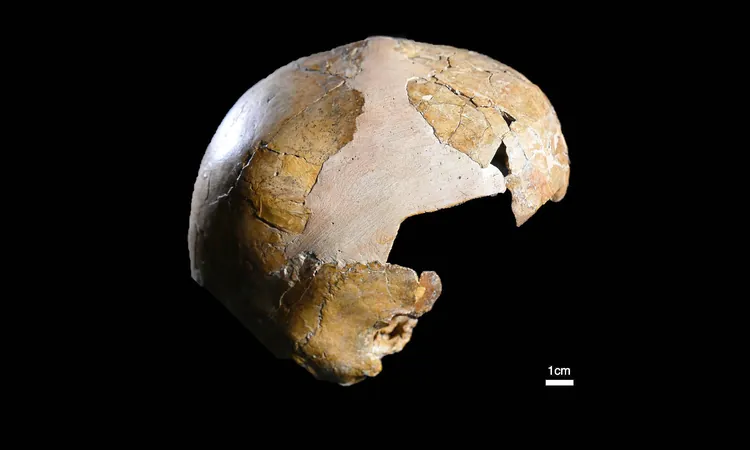
Chagas Disease: An Unseen Threat Now Haunting California and Beyond
2025-09-01
Author: Ling
Chagas disease, a silent menace that affects countless individuals, is no longer confined to the tropics. It has firmly planted its roots in California and 29 other states across the U.S., threatening the health of many unsuspecting victims.
More deadly than malaria in Latin America, Chagas currently lurks in the shadows, with estimates suggesting around 300,000 people in the U.S. are unknowingly infected. The disease can lie dormant for years, revealing itself tragically with heart attacks, strokes, or even sudden death.
What Is Chagas Disease?
Caused by the parasite Trypanosoma cruzi, Chagas is primarily transmitted by the kissing bug—a bloodsucking insect whose presence is alarmingly prevalent in parts of California. In areas like Griffith Park, research indicates nearly one-third of these bugs carry the dangerous parasite.
Raising Alarm: Experts Call for Action
In light of this growing concern, a coalition of epidemiologists and medical experts is urging the World Health Organization and the CDC to officially recognize Chagas as endemic to the U.S. This designation could pave the way for increased awareness, funding, and education about a disease long associated with stigma against impoverished communities.
"Chagas has been neglected for too long, impacting countless Latin Americans. But it’s here now, affecting Americans too," warns Norman Beatty, a medical epidemiologist at the University of Florida.
Unexpected Cases in Affluent Areas
Shockingly, Chagas is infiltrating even the most unexpected neighborhoods. Take, for example, a child from Hollywood Hills who contracted the disease without ever leaving the country—likely caught from local kissing bugs in the affluent community. It's a stark reminder that no area is immune.
Animal Reservoirs and Local Transmission
The threat extends beyond human victims, as the parasite has been found in diverse wildlife across California. From wood rats to black bears, the kissing bug happily feeds on a range of animals, further broadening the reservoir for T. cruzi. This creates a complex scenario for transmission, making it hard to track how many cases might be locally acquired.
A Hidden Epidemic?
California holds the grim distinction of being home to the largest number of Chagas cases in the U.S.—with estimates ranging from 70,000 to 100,000. While many of these cases originate from endemic regions in Latin America, the possibility of homegrown infections cannot be dismissed.
Reporting of Chagas is sparse; it does not require mandatory notification in the state, although Los Angeles County has made it a reportable disease. Between 2019 and 2023, health officials confirmed around 18 cases, but many remain undiagnosed—effectively just the tip of the iceberg.
The Long Road to Diagnosis
Many individuals discover their infection only when attempting to donate blood, exposing a significant gap in awareness and screening for this deceptively dangerous disease. Janeice Smith, a retired teacher, only learned she had Chagas in 2022 after a blood donation revealed her positive status—a frightening revelation that came decades after an unexplained illness in Mexico.
The Need for Urgent Screening and Treatment
The chronic effects of Chagas can be devastating, often mimicking other serious health conditions. In many cases, delayed diagnoses lead to severe complications, including heart issues and organ damage, ultimately driving up healthcare costs significantly.
"Underdiagnosis is rampant. If we actively screened for Chagas, we could catch it early, allowing for treatment that could prevent severe outcomes," states Salvadore Hernandez, a cardiologist. Antiparasitic medications are available to halt the disease's progress, but early intervention is critical.
Chagas in Canines as Well
It's not just humans at risk. Dogs can also contract Chagas, suffering from similar ailments like heart failure or arrhythmias after ingesting infected kissing bugs. This highlights the broader implications of the disease on both public health and animal wellness.
As Chagas disease continues to surface in the U.S., the call for increased awareness and targeted public health measures has never been more urgent. The time to act is now.



 Brasil (PT)
Brasil (PT)
 Canada (EN)
Canada (EN)
 Chile (ES)
Chile (ES)
 Česko (CS)
Česko (CS)
 대한민국 (KO)
대한민국 (KO)
 España (ES)
España (ES)
 France (FR)
France (FR)
 Hong Kong (EN)
Hong Kong (EN)
 Italia (IT)
Italia (IT)
 日本 (JA)
日本 (JA)
 Magyarország (HU)
Magyarország (HU)
 Norge (NO)
Norge (NO)
 Polska (PL)
Polska (PL)
 Schweiz (DE)
Schweiz (DE)
 Singapore (EN)
Singapore (EN)
 Sverige (SV)
Sverige (SV)
 Suomi (FI)
Suomi (FI)
 Türkiye (TR)
Türkiye (TR)
 الإمارات العربية المتحدة (AR)
الإمارات العربية المتحدة (AR)